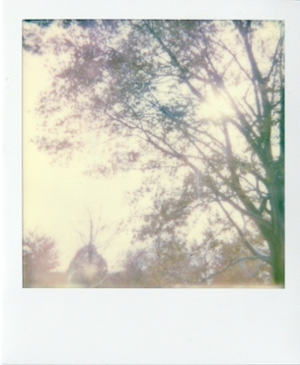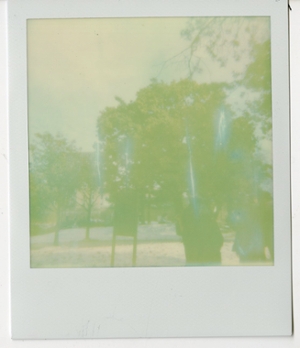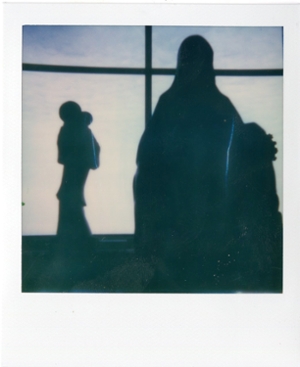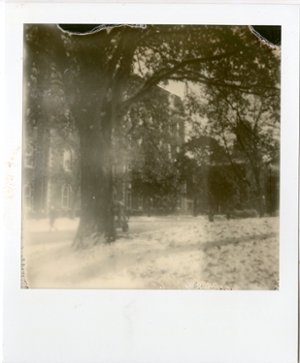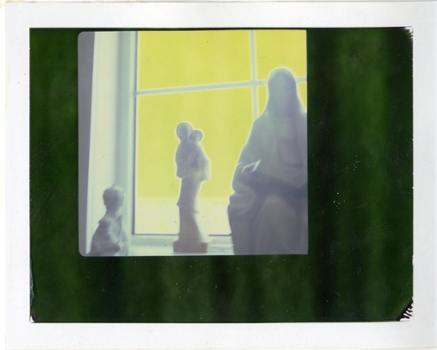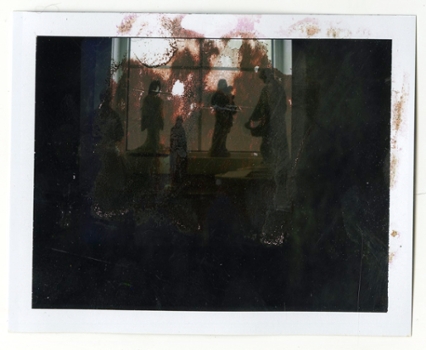Experiential Learning at UD
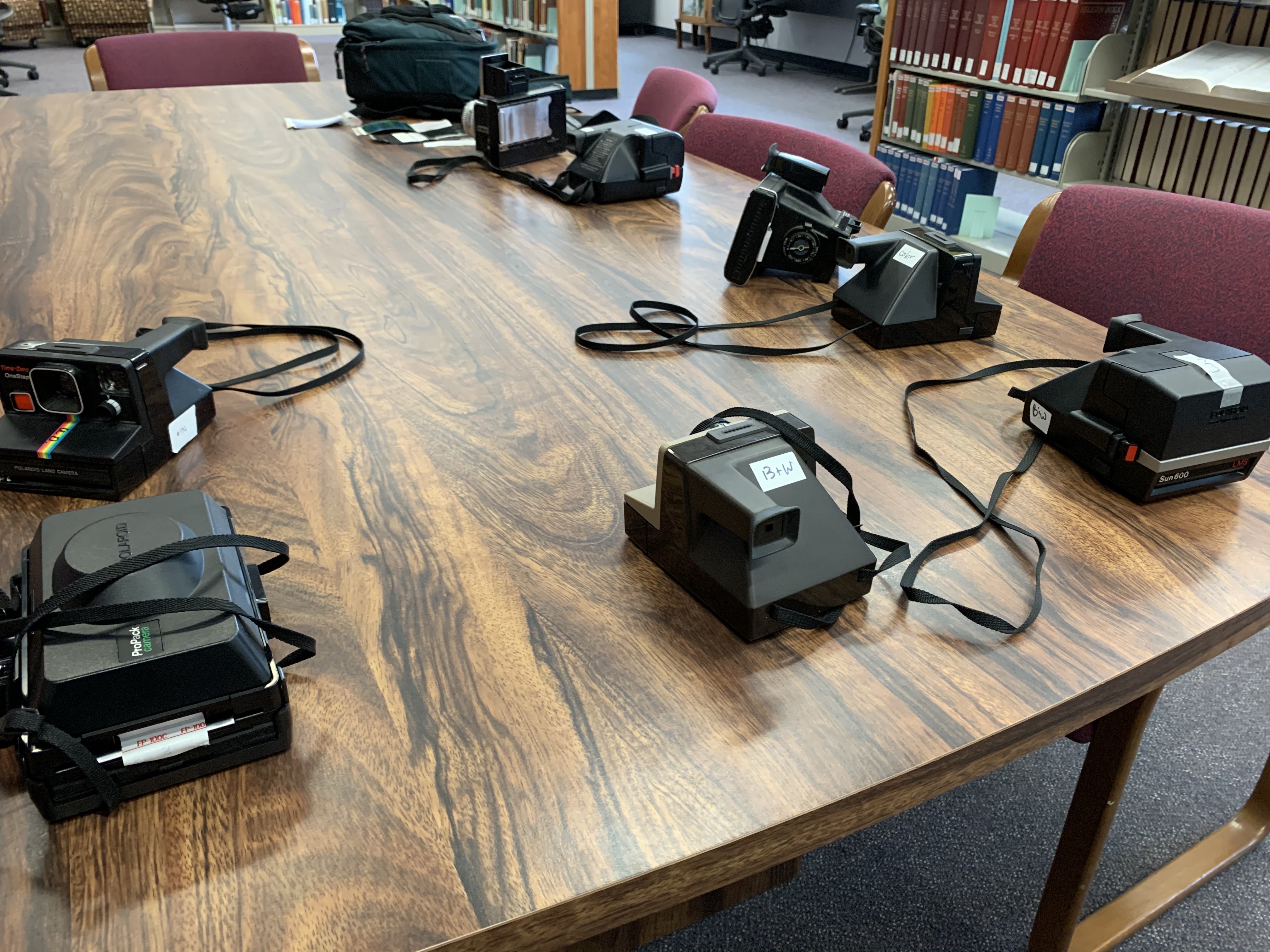
Marian Apparitions
By Rhyan Pearson
This past semester, Jillian Ewalt, of University Libraries, and Julie Jones, of the Department of Art and Design, were awarded the Office of Experiential Learning’s (OEL) Experiential Learning Innovation Fund for Faculty (ELIFF), a grant dedicated to helping faculty and staff improve, encourage, and integrate experiential learning through academic initiatives.
With the awarded grant, Ewalt and Jones purchased classic Polaroid cameras and film. In Jones’ VAP 101 (Foundation Photography) class, students first examined archival from the Marian Library’s collection of apparition documents, with guidance and background from Ewalt, to gain historical context to the project, as well as see what others experiences with appearances of Mary have been. They then received instruction and a “how-to” on the cameras they were going to use and then were set loose to take and develop their own photographs.
Ewalt and Jones chose Polaroids and analog photography in general due to the imperfect nature of the chemical processes at work, and also as a relatively new experience for the students involved in the project, called Marian Apparitions. The project was based on an art exhibit called Faith and Reason, from 2015 which was curated by Joel Whittaker, who is currently the Chair of the Department of Art and Design, using many of the same artifacts that Jones and Ewalt used in their project. The duo actually met at the event and ended up talking about how the collection could be used in the classroom.
Ewalt says that as a part of UD Libraries, the Marian Library strives to engage students with special collections in innovative ways. Ewalt saw a collaboration with Jones as the perfect way to “get that stuff out of the archives, out of storage, and into the experience of students.”
While the students were a little apprehensive about using cameras at first, Jones says that over the course of the experience, they gradually opened up and began taking pictures of each other.here "was a safe space where they understood that accidents could happen… but it's okay if I mess this up. Let's talk about when it's good when it messes up, when they reveal something that maybe you could never expect...I think that really helps their creative process.”
Overall, Jones and Ewalt consider their project a success, and say that the students “were all very receptive and inclusive with those discussions and really curious and interested.”
Student photographs below courtesy VAP 101 students and Jones/Ewalt.
What are the learning goals and outcomes for your proposed EL activity/program?
Students will have the opportunity to analyze and interpret apparition photographs from the Marian Library’s archival collections and use Polaroid cameras to create and critique their own images.
Through this session, students will learn about visual literacy, Marian apparitions, and analog photographic processes. Students will gain experience with:
- Interpreting and analyzing images through discourse with others
- Evaluating the aesthetic and technical characteristics of photographs
- Assessing the reliability and accuracy of image sources
- Situating an image in its cultural, social, historical, and religious contexts
- Discussing cultural, societal, political and historical contexts of photography - from its analog beginnings to current digital climate and the shifting role of photography in global society
- Creating images based on analog photographic techniques
Students will also be introduced to primary source material from the Marian Library’s archival collections (the Marian Apparitions Collection).
How will your EL activity/program enable active, hands-on, self-guided learning?
Grounded and contextualized by course content and readings, the EL session has two experiential components. First, students will work in small groups to analyze, interpret, and discuss archival photographs from the Marian Apparitions Collection. Second, students will work independently and use Polaroid cameras to create and critique their own images. Our EL session will enable active, hands-on, self-guided learning by facilitating visual literacy skills via interaction with archival images and an opportunity to produce images using an analog, instant photographic process. Students will be encouraged to draw not only from readings and theory but also from intuition and personal experience.
How will you ask students to reflect on what they learned through the EL activity/program?
Using guided prompts, students will reflect on the EL activity in both a written and verbal capacity during and after the course session. These reflections will take the form of individual analysis of imagery, group discussion on the social, historical, and religious impact of imagery, as well as an analysis of its relationship to faith and reason. After producing their own photographs, students will be asked to synthesize their experiences with the previous discussions.
How will you assess what your students learn as a result of participating in experiential learning?
Students will be asked to complete an Exit Ticket at the end of the experience. The questions include “What is one new thing you learned today?”, “What is one thing we discussed today that you would like to learn more about?” and “How does the analog photographic process and/or the beliefs of a religious/devotional community impact the image-making process?” Written reflections will also be used to assess student learning.
How does your EL program/activity advance at least one or more of UD's institutional learning goals?
This program advances Scholarship, Faith Traditions, and Critical Evaluation of Our Times. It advances Scholarship because students will cultivate visual literacy and artistic production skills via hands-on experiences with archival visual resources and analog photographic processes. It advances Faith Traditions because students will use controversial/miraculous images from the Marian Library’s collection to engage in critical inquiry and respectful dialogue about Marian apparitions, faith and reason, and photography. It advances Critical Evaluation of Our Times by allowing students to engage in inquiry and reflection using historical images while making connections with contemporary challenges.
Learn more about Julie Jones here and Jillian Ewalt here.
Learn more about the Office of Experiential Learning here, and ELIFF here.

